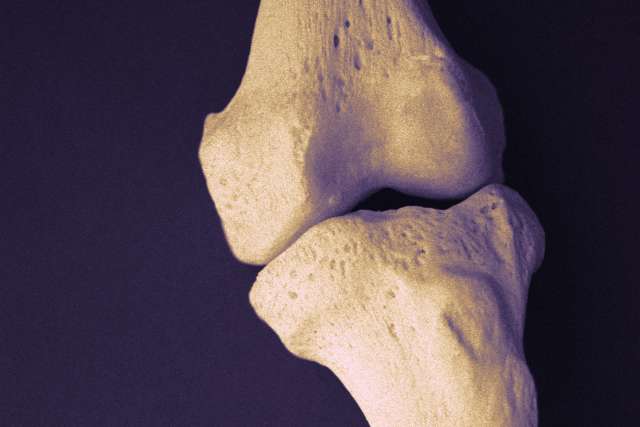Dear Doctors: I am a 77-year-old woman diagnosed by my orthopedist with reduced cartilage in my right knee, probably due to wear and tear and arthritis. I’m not in pain, but I have developed bone spurs, and there is some swelling. What can I do to prevent further degeneration?
Dear Reader: Cartilage is a remarkable tissue that, depending on its type and location, reduces friction, acts as a shock absorber, enhances strength, provides structure and augments flexibility.
There are three types of cartilage in the body. Elastic cartilage, which is found in the outer ears and the larynx, provides shape and elasticity. Fibrocartilage, tough and strong, is found in joint capsules, ligaments and the invertebral discs of the spine. When it comes to the joints, we’re talking hyaline cartilage. Smooth to the touch and a pale bluish-white in color, it is the most abundant type of cartilage in the body.
Hyaline cartilage caps the ends of the bones and lines the inner surfaces of joint capsules. It is due to its smooth surface, with an assist from specialized fluids, that bones can meet and glide, almost frictionless, against one another. The key word here is “almost.” Over time, wear and tear do take a toll.
Cartilage can also sustain physical injury. Twisting a joint can result in damage. So can the force and impact common in sports. Ongoing inflammation from autoimmune conditions can also result in damage. And because cartilage lacks an active blood supply, it is slow to heal.
When cartilage wears away, the bone spurs you have developed often occur. These bony lumps, which form on the surface of joints, are an adaptive response as the body strives to maintain stability in the knee joint. Bone spurs themselves don’t hurt. However, they can limit range of motion and may press or rub against neighboring structures or tissues, which can be painful.
To slow cartilage loss, you want to reduce stress on the joint. That means limiting repetitive and high-impact activities. These require the knee to be a shock-absorber, which can further damage the connective tissues of the joint. The correct shoes are also important. Avoid high heels, which greatly increase stress on the knee. Instead, opt for shoes that are soft and flexible, with either a flat or low heel. It’s also important to reach and maintain a healthy weight. Studies have shown that being overweight, which stresses the joints, can contribute to cartilage loss.
You also want to manage inflammation. Your doctor may recommend nonsteroidal anti-inflammatory drugs, or NSAIDs, such as ibuprofen or naproxen. These can lessen the swelling that you have experienced. NSAIDs can also be helpful for people with cartilage loss who are in pain. When swelling is pronounced, injections may be recommended. Steroids can address inflammation and swelling. Hyaluronic acid, a substance that occurs naturally in joint fluids, can aid in lubrication. Platelet-rich plasma, which is derived from a patient’s own blood, can also stimulate healing. Your doctor can advise you if any of these may be helpful for your specific situation.
(Send your questions to [email protected], or write: Ask the Doctors, c/o UCLA Health Sciences Media Relations, 10960 Wilshire Blvd., Suite 1955, Los Angeles, CA, 90024. Owing to the volume of mail, personal replies cannot be provided.)





